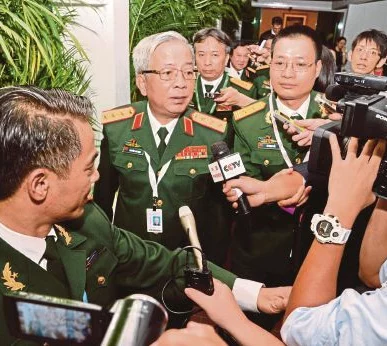Last week, security and defence experts from around the region and beyond converged on Kuala Lumpur and Singapore to deliberate on strategic matters affecting the Asia-Pacific; first at the Asia-Pacific Roundtable, then at the Shangri-La Dialogue. For nearly two decades, the mid-year pit stops in these two cities have become something of an annual pilgrimage for policy leaders and thinkers who work in the areas of foreign affairs, security and defence.
The Asia-Pacific Roundtable (APR), convened at the Track Two, or unofficial, level by the Asean-Institutes of Strategic and International Studies (Asean-ISIS) network and organised by the Institute of Strategic and International Studies (ISIS) Malaysia, turned 30 this year. And, with a draw of about 300 attendees in recent times, it has grown in participation by three times the number it started out with in 1987 — not bad for a Track Two initiative with limited resources.
This year, scholars, officials, and next generation leaders at the APR spent two days debating regional security trends, the future of the Asean Community, energy security, counter-extremism, human insecurity and the South China Sea. They heard addresses by the prime minister of Malaysia, defence minister of Malaysia, and the foreign minister of the Lao People’s Democratic Republic. They also huddled around insider updates from the four corners of Asia to Europe and the Americas.
A number of these participants then moved on to Singapore for the 15th Shangri-La Dialogue, a more defence-focused gathering of official entourages and brass. Interspersed between these two large conferences was a smaller regional security gathering by the Council on Security Cooperation in the Asia-Pacific, a talk by Senator John McCain on America’s commitment to the region, and a book launch by Dr Kurt Campbell, a chief architect of America’s pivot to Asia or rebalance strategy.
Several thematic strands emerged from this intense, week-long conversation on regional security. Firstly, views on Asean seemed more upbeat and hopeful from outside Southeast Asia than within. This reversal is striking. While Asean is not without its own fierce critics in Southeast Asia, its loudest champions have usually been from within the region. Outsiders have tended to view the institution as lumbering and ineffective.
Last week, however, views on Asean among Southeast Asian policy leaders and influencers were decidedly dour and stern. This is not necessarily a bad thing. Despite Asean’s enduringly positive rhetoric, member states have long understood that the institution’s future is as much about its potential as its limitations. To openly acknowledge existing differences as a constraint against a more united front in some of the region’s more challenging disputes such as in the South China Sea is a sign of maturity. To want to do something about it is another.
The optimism about Asean shared by major and middle power partners is encouraging. It demonstrates a more nuanced understanding of Asean from those outside the region who are slowly growing accustomed to the Asean way, which is itself evolving. Despite its visionary ambitions, Asean will not be able to communicate unity and centrality on all issues all of the time. This is only natural for any organisation of its diversity. A more realistic perspective of Asean from inside, coupled with constructive support from the outside can only ground and advance Asean in the realities of unfolding events.
Secondly, although security is now generally and preferably viewed in a more comprehensive manner because of cross-boundary and cross-border challenges and opportunities, there remains a divergence in threat perception among major powers, and middle and minor ones. This played out quite markedly at the Shangri-La Dialogue where officials representing major powers addressed rivalry and competition among themselves as well as hard security issues like the nuclear threat.
Ministers of Southeast Asian nations and Canada, on the other hand, underscored unconventional challenges such as terrorism, climate change, irregular migration, as well as natural and induced disasters — what one participant tweeted as “Southeast Asian generalities”. This difference in threat perception and prioritisation reflects a difference in real-world motivations and capabilities. Major powers see and describe the strategic environment as they do in hard, military terms because they can. They have superior assets and weaponry to deploy in different theatres and domains, from the East China Sea to the South China Sea and from the Korean Peninsula to virtually everywhere within cyber space. Smaller nations do not have that luxury and must, by necessity, think and see differently. The threat landscape may seem general from these lens but the risks are no less urgent. They also require creative approaches in management. Not every problem can or should be blitzed into oblivion.
Thirdly, what is clear is that as security dialogues proliferate in this and other regions, there is a growing need, accompanied by increasing calls, to include more women and next generation leaders in the discussions. This year’s APR saw women make up a quarter of our moderators and one-ninth of our speakers. We were grateful to receive a sizeable delegation of young leaders as participants but we also received feedback, in typical Track Two frankness, to include more women and younger voices on stage. For the record, we did in fact include more role players from both categories, wholly on merit rather than as tokens — in the early stages of planning and outreach. But as plans concretised and changes had to be accommodated, the eventual outcome of our programme did not, unfortunately, reflect our initial intention.
Going forward, we will certainly try to do better. It is, after all, only right for half the world’s population and the next generation to be represented in discussions on international peace, security, and stability
Article by Elina Noor which appeared in The New Straits Times, June 7, 2016.





